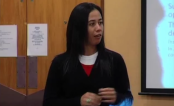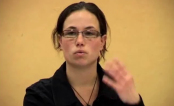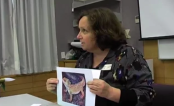Te Aho Arataki Marau mō te Ako i Te Reo Māori - Kura Auraki
Curriculum Guidelines for Teaching and Learning Te Reo Māori in English-medium Schools: Years 1-13
Curriculum guidelines 521 PDF (PDF, 4 MB)
Page navigation:
Te mōhio ki ngā momo ara reo
Language knowledge
To learn te reo Māori, students need to learn to use all the ara reo (language modes):

| whakarongo – listening |

| pānui – reading |

| mātakitaki – viewing |

| kōrero – speaking |

| tuhituhi – writing |

| whakaatu – presenting |
Language modes and possible contexts for language learning
Glossary that has an explanation of the symbols.
The knowledge and skills required for the different ara reo are closely connected, so that learning in any one mode supports learning in the others. However, students need opportunities to learn every mode of language, and that need is reflected in the structure of these curriculum guidelines.
In order to communicate competently, students need to acquire knowledge of specific language items, such as grammar, vocabulary, and the characteristic features of particular text types. Effective teachers of te reo Māori help students to develop an understanding of how the language works in the context of communicative language learning activities, while integrating students’ language learning with their learning about tikanga. They ensure that students develop both implicit and explicit knowledge of the target language. 'Implicit knowledge' is the knowledge that learners acquire and use unconsciously, and 'explicit knowledge' is knowledge that requires conscious teaching and learning.
Students acquire the system of a language progressively. For example, in the initial stages, they may produce approximations of a given grammatical structure. These approximations are often stepping stones to acquiring the correct forms. Even when students know the structure of a language only partially, they can communicate effectively to some degree by using approximations. Over time, they gain a range of language learning strategies, including working out a word’s meaning based on its context, making links to prior knowledge and experiences, and looking at the parts of unfamiliar words and phrases.
Teachers can scaffold students’ learning of specific language forms by setting well-constructed communicative tasks that naturally lead them to notice and reproduce those forms so that they gain implicit knowledge of them. Teachers can also help their students to make this knowledge explicit, for example by discussing the language forms incidentally.
Research has shown that language learners benefit when their attention is drawn to the forms of words, grammatical structures, and texts incidentally, in the context of real messages with meaningful content. Teaching grammatical rules explicitly and expecting students to memorise them is less effective. An important part of a language teacher’s repertoire is knowing how to teach language forms in meaningful and effective ways.
Level 1 of these curriculum guidelines introduces a number of useful formulaic expressions, that is, expressions that can be used meaningfully in a consistent form in a specific context (without reference to how it might be adapted for other uses). For example, greeting and leave-taking expressions tend to be formulaic, and it is appropriate to introduce them as such. Careful, staged introduction of various greeting routines, both formal and informal, will lead students to understand when to use kia ora and when to use tēnā koe. They will come to understand to use tēnā koe when greeting one person, tēnā kōrua when greeting two people, and tēnā koutou when greeting more than two people. Students will gradually come to understand that te reo Māori has singular, dual, and plural pronoun forms.
Using te reo Māori in teaching – provides guidance on how to create a language-rich environment where students are immersed in te reo.
Learning vocabulary is an essential part of learning a new language. Where vocabulary is introduced and practised in communicative contexts (rather than in lists), students are likely to see the relevance of learning words and phrases and to be sufficiently interested and motivated to remember them. If teachers use te reo Māori words and expressions regularly, in ways that make their meaning clear, students will soon understand this language. Receptive language acquisition (learning to recognise words and their meanings by listening or reading) is likely to take place before productive language use (learning to use words meaningfully in speaking or writing).
It is natural for students to make mistakes while they are learning any new language. Teachers need to find an effective balance between encouraging students to communicate spontaneously and correcting their errors. When students are conversing spontaneously, teachers may often choose to let some mistakes go uncorrected. This allows the conversation to flow and helps the students to gain confidence and use the language willingly. But students should also have opportunities to receive feedback on how close their approximations are to the correct form and advice on how to improve.
As students progress through the levels, they learn to communicate more accurately. They become aware that, as well as fluency, accuracy of expression and increasing levels of sophistication in language use are needed for effective communication.





